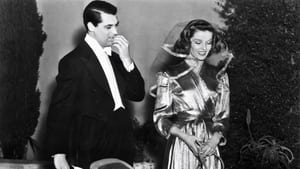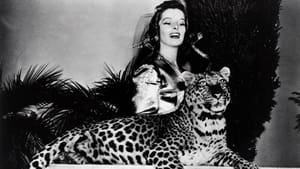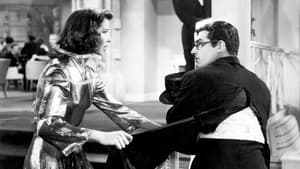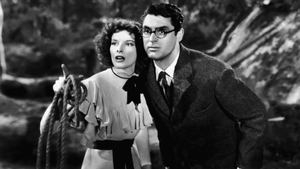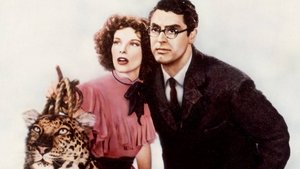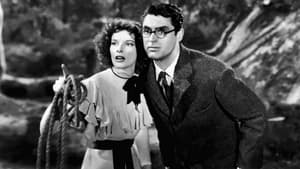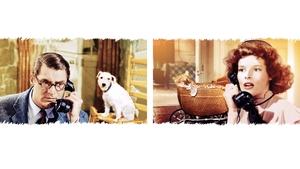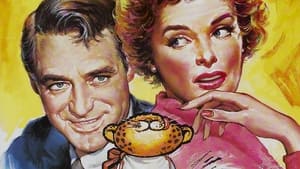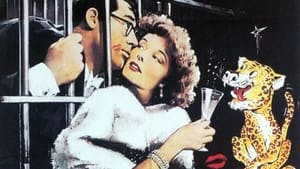Contact: [email protected]
Video Sources 0 Views
- Watch trailer
- Bringing Up Baby

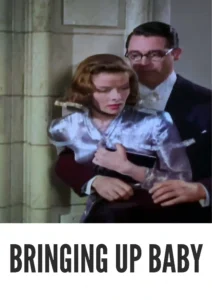
Synopsis
Table of Contents
ToggleReview: In Bringing Up Baby (1938) – A Whimsical Romp Through the Zany Adventures of Love

Introduction
“Bringing Up Baby” (1938) remains a delightful romp through the whimsical world of screwball comedy, offering audiences a timeless tale of love, laughter, and lunacy. In this review, we’ll explore the significance of this classic film and its enduring charm in the realm of romantic comedy.
Check The Full Colorized Movies List
Check Our Colorized Movies Trailer Channel
Understanding Bringing Up Baby 1938: Director, Cast, and Genre
Directed by the legendary Howard Hawks, “Bringing Up Baby” (1938) showcases his flair for fast-paced dialogue and comedic timing, elevating the film to iconic status in the annals of Hollywood history. The film features a stellar cast, including Katharine Hepburn and Cary Grant, whose impeccable chemistry and comedic timing make them one of the most beloved screen duos of all time. Blending elements of romance, farce, and slapstick, “Bringing Up Baby” (1938) transports viewers to a world where anything is possible and hilarity ensues at every turn.
Exploring the World of Bringing Up Baby 1938: Plot and Characters
At its heart, “Bringing Up Baby” (1938) follows the misadventures of a mild-mannered paleontologist, played by Cary Grant, whose life is turned upside down when he crosses paths with a free-spirited heiress, portrayed by Katharine Hepburn, and her mischievous pet leopard named Baby. As they embark on a series of madcap escapades, they discover the true meaning of love and friendship amidst the chaos and confusion. Along the way, they encounter a host of eccentric characters who add to the film’s whimsical charm and comedic appeal.
The Art of Film Colorization
Film colorization has the power to transform classic movies, breathing new life into timeless stories and captivating audiences with vibrant hues. By digitally adding color to black and white films, colorization allows viewers to experience the magic of cinema in a whole new way, rediscovering old favorites with fresh eyes and renewed appreciation.
Early Colored Films: A Brief History
The history of colored films stretches back to the early days of cinema, with filmmakers experimenting with various techniques to add color to their creations. From hand-tinted frames to early Technicolor processes, the evolution of colored film has been marked by innovation and creativity, paving the way for the development of modern colorization techniques that continue to captivate audiences to this day.
Bringing Up Baby 1938 and Its Early Colored Version
The decision to release “Bringing Up Baby” (1938) in a colorized format was met with both excitement and skepticism. While some welcomed the opportunity to experience the film in vibrant color, others expressed concerns about the potential impact on its visual aesthetic. Nevertheless, the early colored version of “Bringing Up Baby” (1938) offers viewers a fresh perspective on the classic comedy, enhancing its visual appeal and bringing its whimsical world to life in vivid detail.
The Debate Over Film Colorization
The debate over film colorization continues to divide audiences and critics alike, with proponents praising its ability to breathe new life into classic movies and introduce them to a new generation of viewers, while detractors argue that it compromises the artistic integrity of the original work and diminishes its historical significance. As the debate rages on, filmmakers and audiences alike are left to ponder the merits and drawbacks of colorization in the ever-evolving landscape of cinema.
Examining Bringing Up Baby 1938 as an Early Colored Film
As with any colorized classic, the impact of colorization on “Bringing Up Baby” (1938) is a matter of personal interpretation. Some may argue that it enhances the film’s visual appeal and immerses viewers in its world, while others may feel that it detracts from the charm of the original black and white version. Regardless of one’s stance on the issue, there’s no denying the enduring power of “Bringing Up Baby” (1938) as a timeless comedy that continues to captivate audiences with its wit, charm, and irreverent humor.
Influence and Legacy: Bringing Up Baby 1938’s Impact on Cinema
“Bringing Up Baby” (1938) has left an indelible mark on the world of cinema, inspiring countless filmmakers and captivating audiences with its timeless tale of love and laughter. From its unforgettable performances to its iconic dialogue, the film continues to resonate with viewers of all ages, reaffirming its status as a beloved classic of the romantic comedy genre.
Director’s Cinematic Legacy: Beyond Bringing Up Baby 1938
Howard Hawks’ influence extends far beyond “Bringing Up Baby” (1938), with a diverse body of work that continues to captivate audiences around the globe. From “His Girl Friday” to “The Big Sleep,” Hawks’ films are celebrated for their sharp wit, dynamic characters, and timeless appeal, solidifying his legacy as one of the greatest directors of Hollywood’s Golden Age. Through his groundbreaking work, Hawks has left an indelible imprint on the world of cinema, inspiring generations of filmmakers to follow in his footsteps.
Themes Explored in Bringing Up Baby 1938
“Bringing Up Baby” (1938) explores a myriad of themes, from the transformative power of love to the absurdity of human nature. Through its zany plot and quirky characters, the film invites viewers to embrace life’s unpredictability and find joy in the chaos. As audiences immerse themselves in the world of “Bringing Up Baby” (1938), they are reminded of the universal truths that bind us together and the enduring power of laughter to uplift the soul.
Reception and Controversy Surrounding Bringing Up Baby 1938
Upon its release, “Bringing Up Baby” (1938) received widespread critical acclaim, with many praising its sparkling wit, charming performances, and delightful absurdity. However, the decision to release the film in a colorized format sparked debate among purists, reigniting the age-old discussion surrounding film preservation and artistic integrity. Despite the controversy, “Bringing Up Baby” (1938) remains a beloved classic that continues to entertain audiences with its timeless humor and infectious energy.
Where to Watch Bringing Up Baby 1938 Online
For those eager to experience the timeless magic of “Bringing Up Baby” (1938), the film is readily available on popular streaming platforms such as Netflix, Amazon Prime, and Hulu. Whether you choose to watch it in its original black and white format or the early colored version, “Bringing Up Baby” (1938) promises to whisk you away on a whirlwind adventure filled with laughter, love, and unforgettable moments.
FAQs About Bringing Up Baby 1938
Q: Is “Bringing Up Baby” (1938) based on a true story? A: No, “Bringing Up Baby” (1938) is a fictional comedy of errors that follows the misadventures of its quirky characters as they navigate the pitfalls of love and laughter.
Q: Who are the main actors in “Bringing Up Baby” (1938)? A: “Bringing Up Baby” (1938) features an ensemble cast led by the incomparable Katharine Hepburn and Cary Grant, whose impeccable chemistry and comedic timing make them one of the most beloved screen duos of all time.
Q: What awards did “Bringing Up Baby” (1938) win? A: While “Bringing Up Baby” (1938) did not win any major awards, it received critical acclaim for its sparkling wit, charming performances, and delightful absurdity.
Q: Why was “Bringing Up Baby” (1938) released in a colorized format? A: The decision to release “Bringing Up Baby” (1938) in color was made to introduce the film to a new generation of viewers and enhance its visual appeal for modern audiences. While the choice to colorize the film sparked debate among purists, it ultimately allowed “Bringing Up Baby” (1938) to reach a wider audience and ensure its continued relevance in the annals of cinematic history.
Conclusion
“Bringing Up Baby” (1938) continues to enchant audiences with its timeless tale of love and laughter, reminding us of the enduring power of cinema to uplift the soul and ignite the imagination. Whether viewed in its original black and white format or the early colored version, “Bringing Up Baby” (1938) remains a cherished classic that continues to captivate audiences of all ages, reaffirming its status as one of the greatest romantic comedies of all time.

